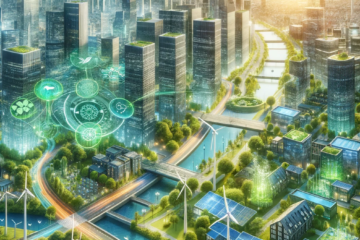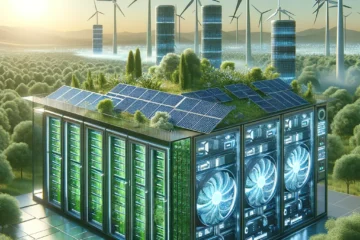As we stand on the precipice of a new era, the intersection of sustainability and technology is more critical than ever. The automotive industry, a significant contributor to global carbon emissions, is undergoing a transformative shift. This article explores the exciting advances in green automotive technology that are driving us towards a sustainable future.
The Green Revolution in the Automotive Industry
The automotive industry has been a significant player in the global economy for over a century. However, the environmental impact of traditional, fossil fuel-powered vehicles is undeniable. The industry’s green revolution is a response to this challenge, aiming to reduce carbon emissions and environmental impact through innovative technology.
Electric Vehicles (EVs)
Electric vehicles are at the forefront of this revolution. Powered by electricity stored in a rechargeable battery pack, EVs produce zero tailpipe emissions. Advances in battery technology, such as the development of lithium-ion batteries with higher energy density, have made EVs a viable alternative to traditional vehicles.
Hybrid Vehicles
Hybrid vehicles, which combine a gasoline engine with an electric motor, are another key player in the green automotive landscape. They offer the benefits of electric driving while providing the range and convenience of a traditional engine. Recent technological advances have improved their fuel efficiency and reduced their emissions, making them an increasingly popular choice.
Emerging Technologies in Green Automotive
While electric and hybrid vehicles are leading the charge, several emerging technologies promise to further revolutionize the industry.
Hydrogen Fuel Cell Vehicles
Hydrogen fuel cell vehicles (FCVs) are a promising technology. They generate electricity from hydrogen, emitting only water vapor and heat. While challenges remain in terms of hydrogen production and infrastructure, advances in fuel cell technology and hydrogen storage are paving the way for a potential hydrogen economy.
Vehicle-to-Grid Technology
Vehicle-to-grid (V2G) technology allows electric vehicles to communicate with the power grid, providing the ability to sell excess electricity back to the grid during peak demand times. This technology not only has the potential to offset the cost of owning an EV but also helps stabilize the grid, making renewable energy sources more viable.
Autonomous Driving Technology
Autonomous driving technology, while not green in itself, has the potential to significantly reduce emissions and increase efficiency. Self-driving cars can optimize routes, reduce congestion, and maintain steady speeds, all of which contribute to lower fuel consumption and emissions.
The Role of Policy and Infrastructure
While technology is a crucial driver of the green automotive revolution, policy and infrastructure play equally important roles. Governments worldwide are implementing policies to promote the adoption of green vehicles, including subsidies for EV purchases, stricter emissions standards, and plans to phase out fossil fuel vehicles.
Charging Infrastructure
The development of charging infrastructure is vital for the widespread adoption of electric vehicles. Rapid advances are being made in charging technology, with ultra-fast chargers significantly reducing charging times. At the same time, the deployment of charging stations is increasing, with a focus on strategic locations such as highways, public parking lots, and residential areas.
Hydrogen Infrastructure
For hydrogen fuel cell vehicles, the development of a hydrogen infrastructure is a significant challenge. This includes the production, storage, and distribution of hydrogen. However, several countries, including Japan and Germany, are investing heavily in this area, signaling a strong belief in the potential of hydrogen as a green automotive fuel.
Conclusion
The green automotive revolution is well underway, driven by advances in technology, supportive policies, and the development of infrastructure. While challenges remain, the progress made in recent years is encouraging. As we continue to innovate and push the boundaries of what is possible, the dream of a sustainable, green automotive future is becoming a reality.




